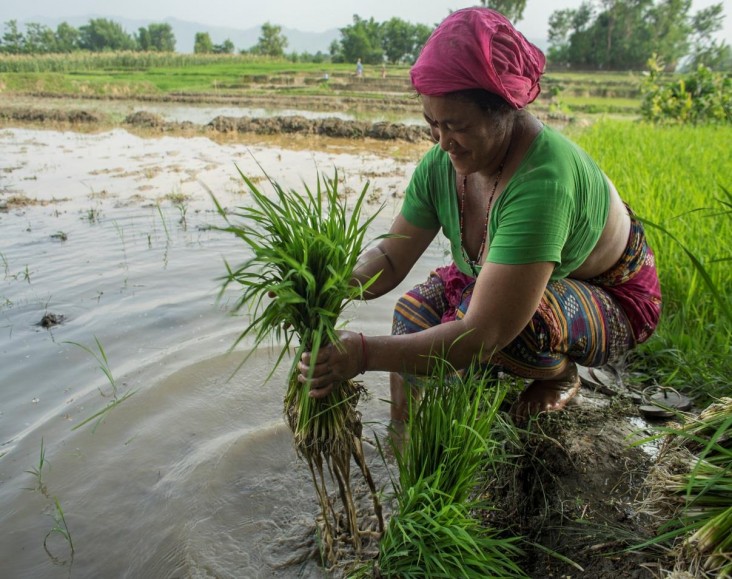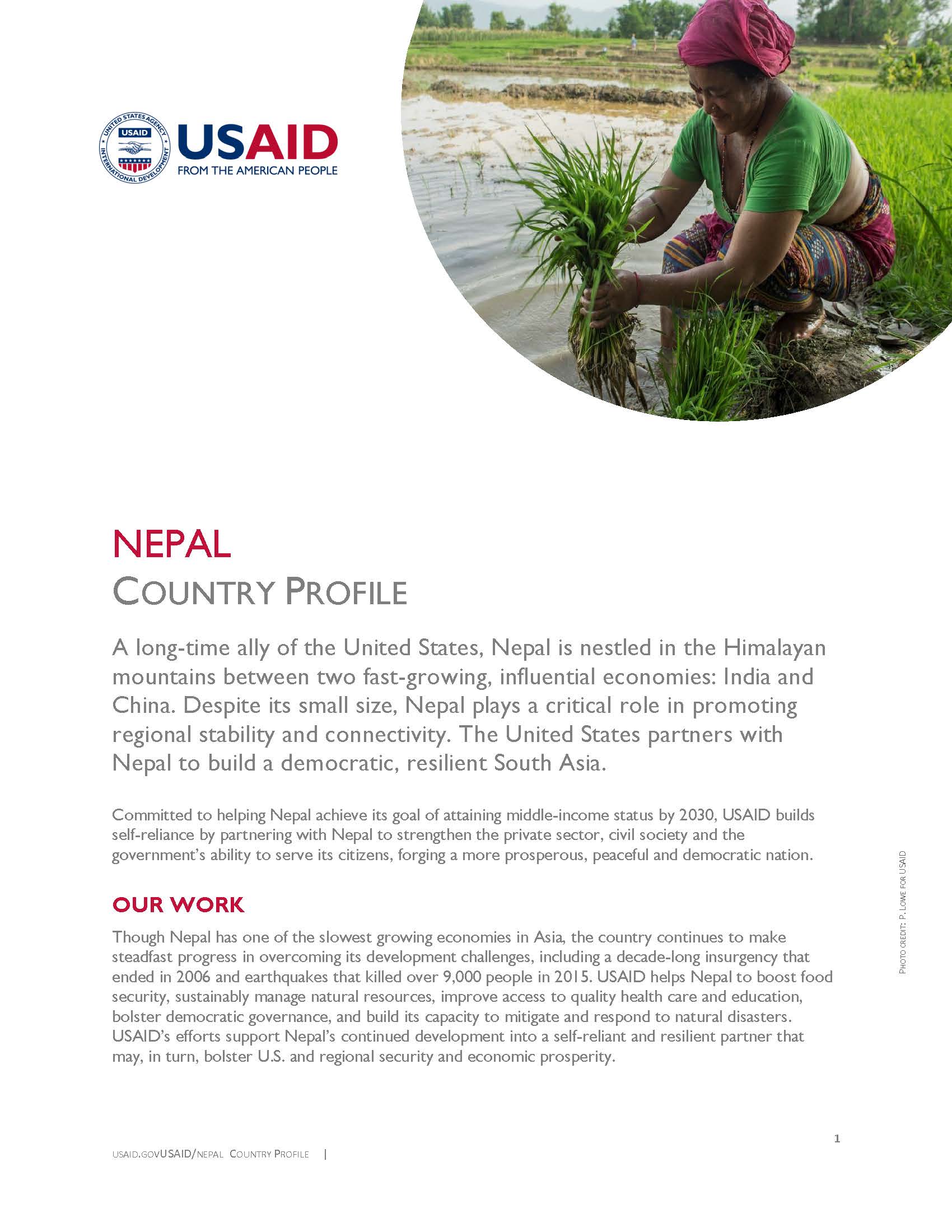Speeches Shim

COUNTRY PROFILE
A long-time ally of the United States, Nepal is nestled in the Himalayan mountains between two fast-growing, influential economies: India and China. Despite its small size, Nepal plays a critical role in promoting regional stability and connectivity. The United States partners with Nepal to build a democratic, resilient South Asia.
Committed to helping Nepal achieve its goal of attaining middle-income status by 2030, USAID builds self-reliance by partnering with Nepal to strengthen the private sector, civil society and the government’s ability to serve its citizens, forging a more prosperous, peaceful and democratic nation.
OUR WORK
Though Nepal has one of the slowest growing economies in Asia, the country continues to make steadfast progress in overcoming its development challenges, including a decade-long insurgency that ended in 2006 and earthquakes that killed over 9,000 people in 2015. USAID helps Nepal to boost food security, sustainably manage natural resources, improve access to quality health care and education, bolster democratic governance, and build its capacity to mitigate and respond to natural disasters. USAID’s efforts support Nepal’s continued development into a self-reliant and resilient partner that may, in turn, bolster U.S. and regional security and economic prosperity.
FOOD SECURITY AND NATURAL RESOURCE MANAGEMENT
Limited access to agricultural supplies and markets threaten farmers’ livelihoods. To help farmers to earn a living wage, USAID forges partnerships between suppliers, producers, wholesalers and retailers. As a result, more than 118,000 farm households increased their annual sales by an average of 380 percent between 2012 and 2017. To counter the impact of unplanned development and a growing population on Nepal’s natural resources, USAID promotes socially and environmentally responsible hydropower development, sustainable forest and water management, and wildlife conservation.
HEALTH AND EDUCATION
Due to limited access to high-quality health care, one out of every 30 Nepali children dies before reaching his or her first birthday. To save lives, USAID increases access to high-quality, decentralized and equitable health services. Between 2011 and 2016, USAID helped to decrease Nepal’s under-5 mortality rate by 28 percent. Similarly, low-quality education threatens Nepal’s future — only 12.8 percent of third grade students can read. As foundational reading skills are critical to building a skilled population, USAID partners to improve the reading outcomes of one million students in grades 1 to 3.
Nepal Country Profile ![]() (pdf - 421k)
(pdf - 421k)
DEMOCRACY AND GOVERNANCE
As Nepal transitions to a democratic nation, the country faces one of its toughest challenges yet: adjusting to a new federal structure. Nepal reiterated its commitment to more inclusive and transparent governance by adopting a new constitution in 2015 and successfully completing historic local elections after 20 years in 2017. USAID's support helped secure a record 75 percent voter turnout, and more than 1.7 million Nepalis — over 10 percent of total eligible voters, most of whom were women or members of marginalized groups — registered to vote for the first time.
DISASTER RISK REDUCTION, RESILIENCE AND RECONSTRUCTION
Natural disasters affect thousands of people each year, thwarting Nepal’s self-reliance. USAID is leading efforts to build the government’s capacity to fulfill its post-earthquake reconstruction commitments and mitigate and respond to future disasters. As a result, over 251,000 Nepalis have earthquake-resilient homes and 112,000 have access to high-standard health and education facilities





Comment
Make a general inquiry or suggest an improvement.